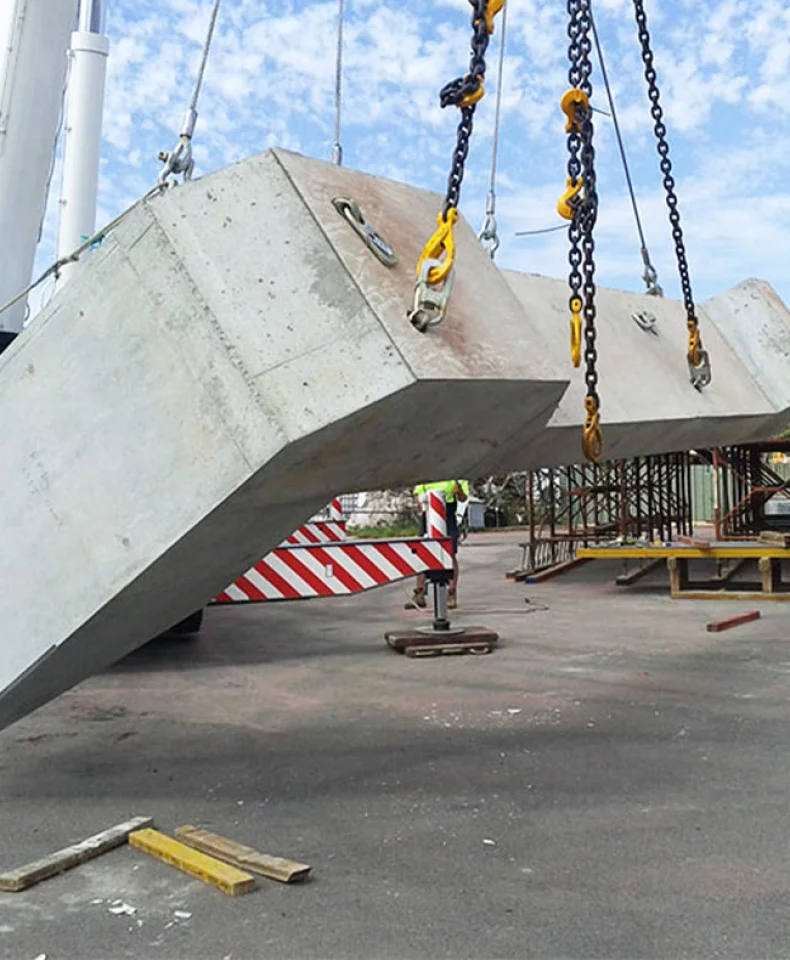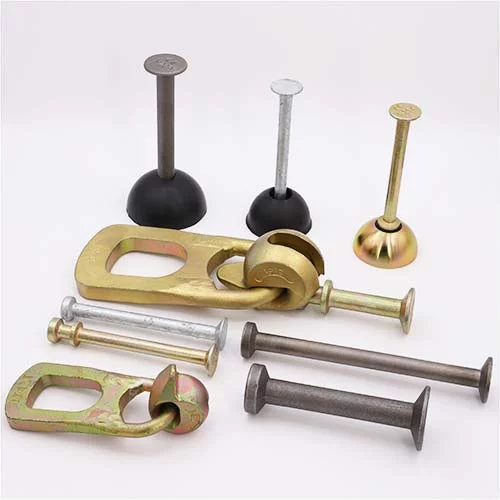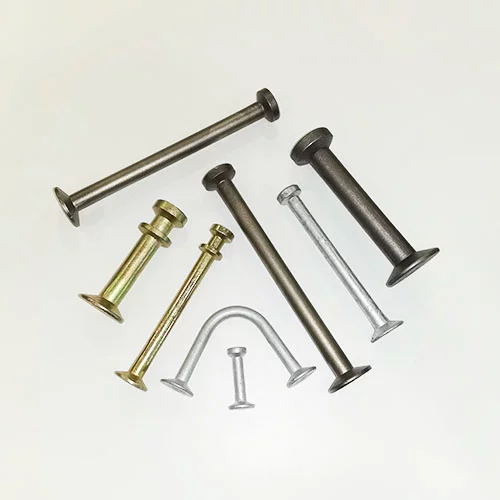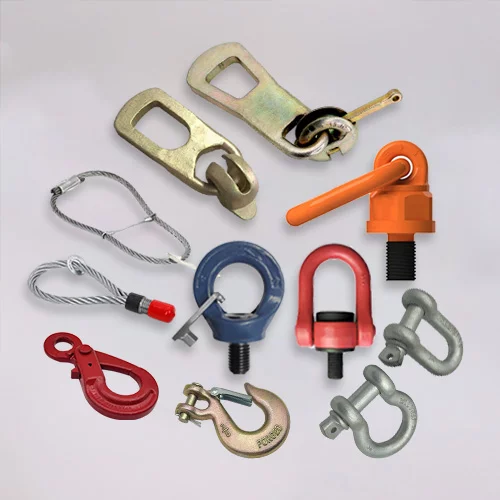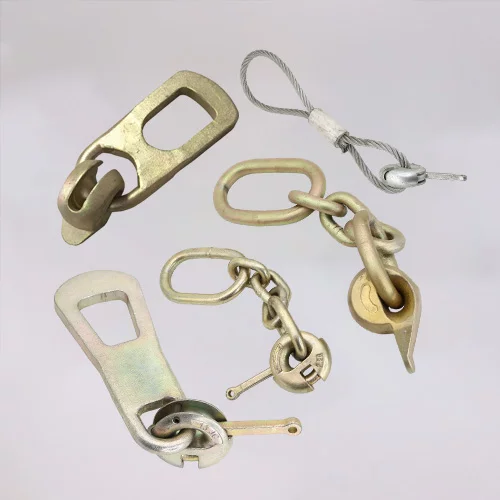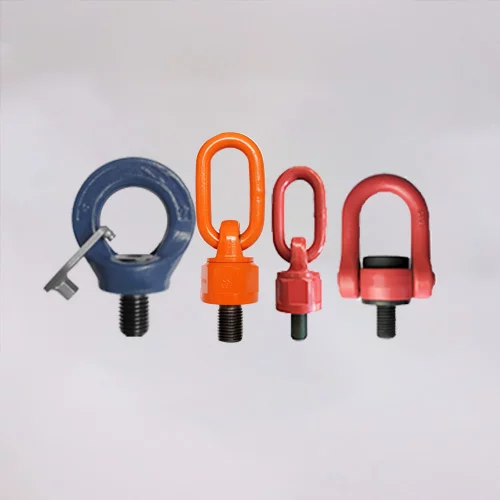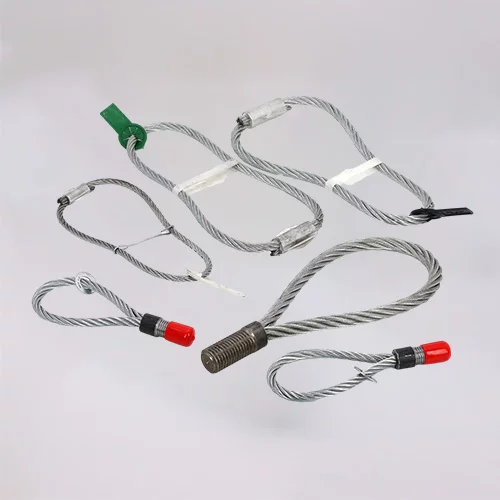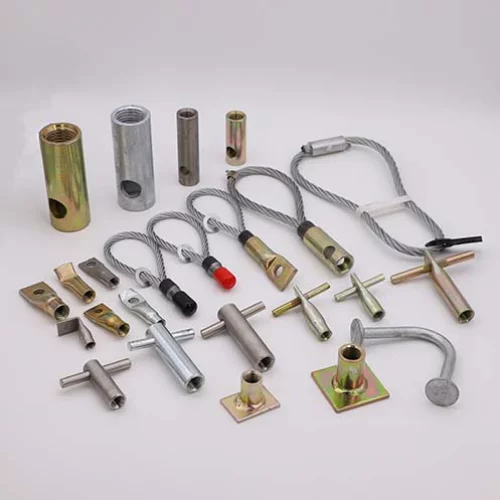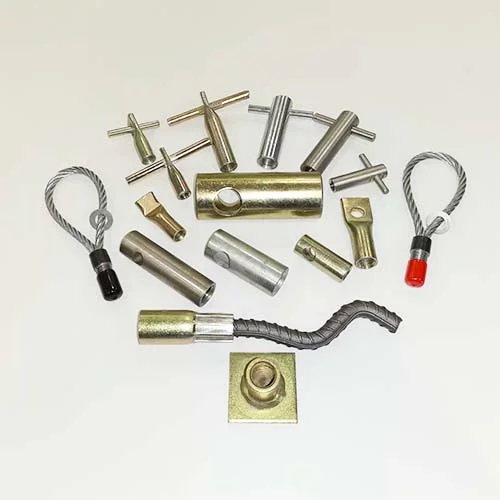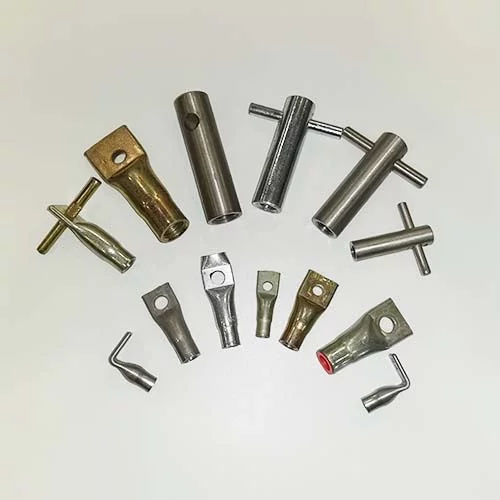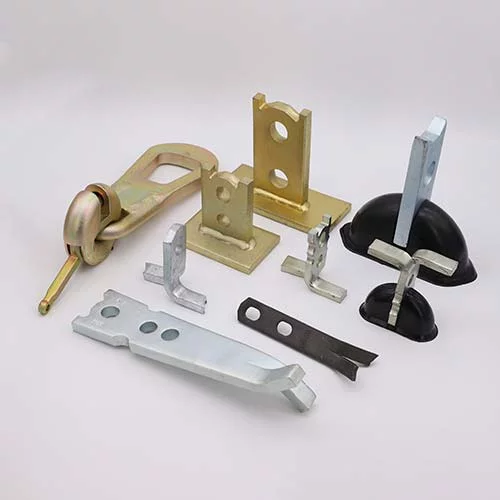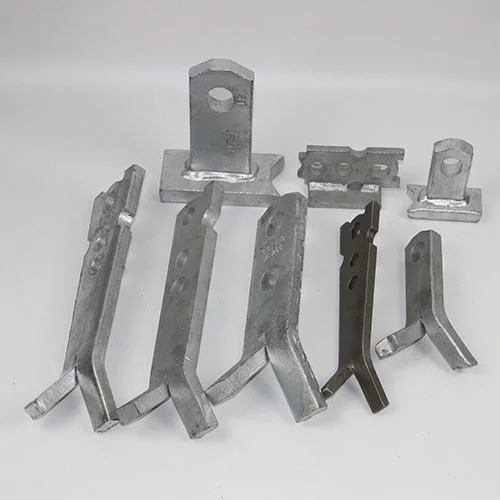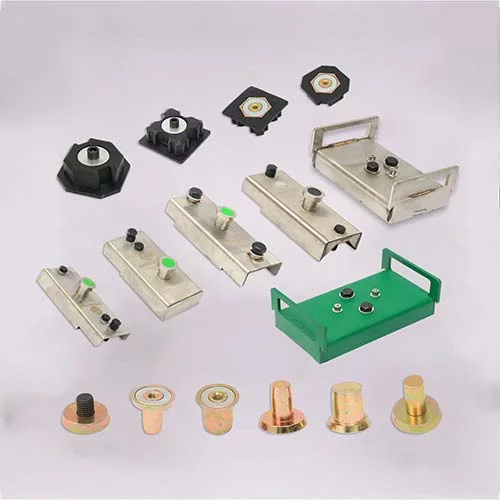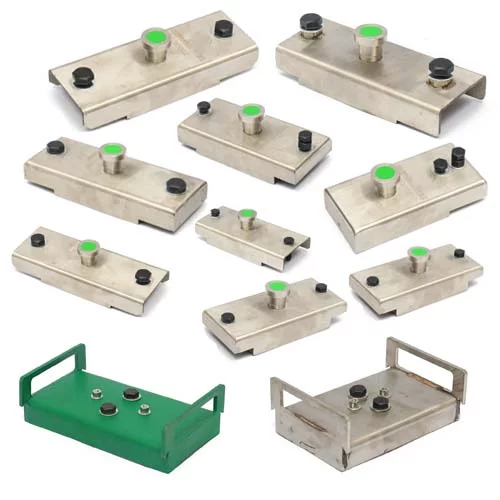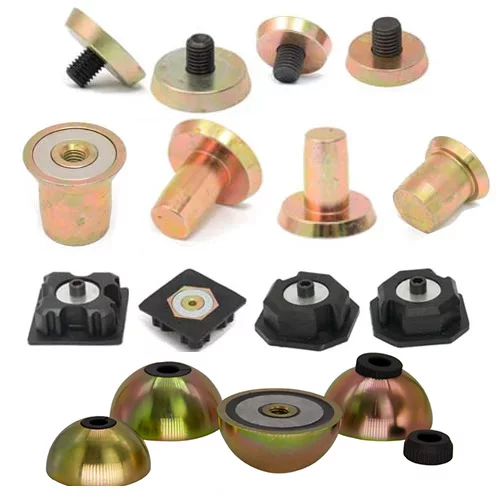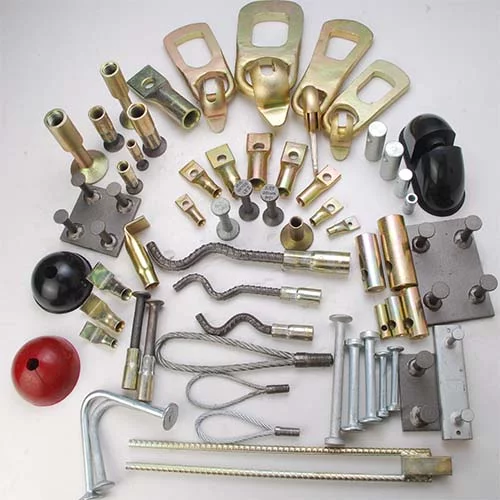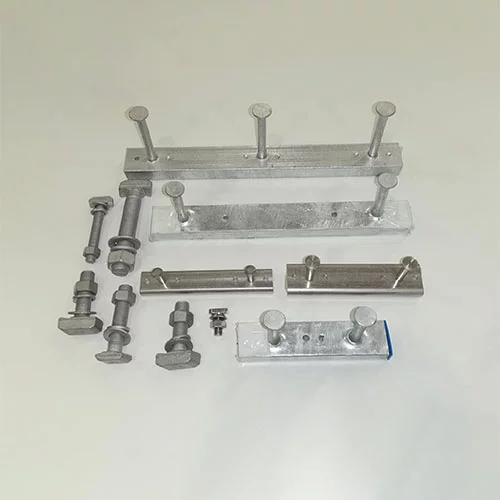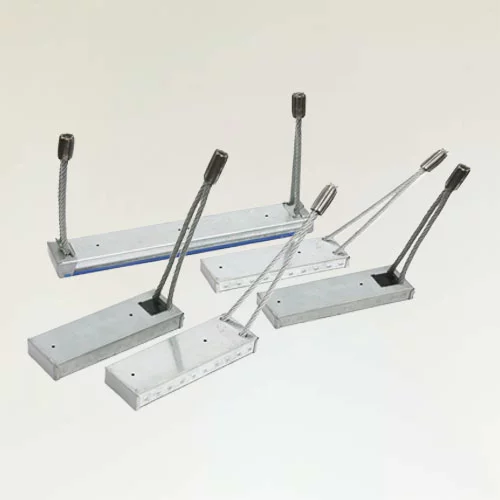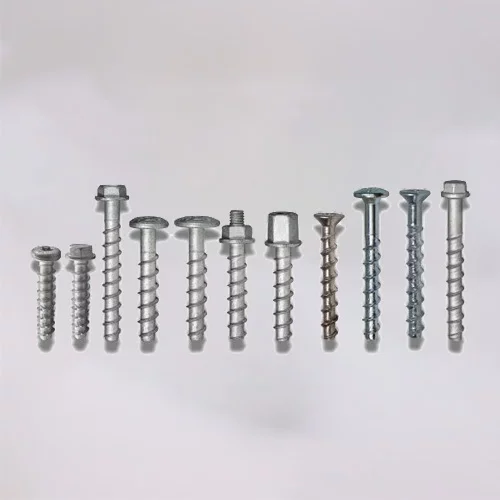Comprehensive Guide to Lifting Rigging Hardware Solutions by HULK Metal

Understanding Lifting Rigging Hardware
Lifting rigging hardware refers to all mechanical fittings, attachments, and accessories used to safely lift, hoist, or move heavy loads. In precast-concrete construction, infrastructure projects, and industrial applications, hardware typically includes:
Lifting Anchors: Embedded or welded points in concrete or steel that connect to hoisting equipment.
Spread Anchors: Specialized cast-in or mechanically expanded devices that distribute load across a larger footprint.
Lifting Clutches and Recess Formers: Mechanisms that engage with embedded anchors to transmit lifting forces.
Lifting Eyes and Eye Anchors: Forged or machined rings welded or bolted onto heavy equipment or structures.
Shackles: Bow- or dee-shackles that allow cross-connecting slings, hooks, and chains.
Wire Rope Grips and Clips: Fasteners that secure wire rope ends for hooks, slings, or lifting beams.
Connecting Links: Interchangeable connectors used to assemble multi-leg slings and adjust load angles.
When integrated into a complete lifting system, these common
ents work in concert to ensure that load capacity ratings, safety factors, and directional forces are all properly accounted for. For example, a precast-panel lift may use a combination of spherical head lifting anchors (to provide a positive, angular-rated connection point), paired with matching lifting clutches (to engage the anchor in-situ), and terminated with shackles and eye bolts to connect to the crane hook. Understanding how each piece functions—individually and as part of an assembly—is essential for specifying the correct hardware and avoiding rigging failures.
Material Choices and Manufacturing Processes
Common Materials
Most heavy-duty lifting rigging components are machined or forged from carbon and alloy steels selected for their tensile strength, toughness, and fatigue resistance. Common grades include:
Q345D (China Standard Steel):
Equivalent to ASTM A572 Grade 50, offering a minimum yield strength of 345 MPa and excellent weldability.
20Mn2 (Chinese Alloy Steel):
Known for its high tensile and yield strengths, combined with good elongation and impact toughness.
CM490 (Chinese Medium-Carbon Low-Alloy Steel):
Similar to ASTM 4140, used where higher fatigue life and toughness are required.
These steels undergo precise chemistry control to ensure consistent mechanical properties under static and dynamic loads. When correctly heat-treated and machined, they deliver long service life and reliable performance, even in challenging lifting scenarios.
Stainless Steel Options
For projects exposed to corrosive or marine environments—such as offshore platforms, coastal infrastructure, or chemical processing facilities—stainless steels (e.g., 304, 316, or duplex grades) are preferred. While slightly lower in yield strength compared to carbon alloys, stainless steels offer superior corrosion resistance, reducing the risk of stress-corrosion cracking and surface pitting in chloride-rich conditions.
Custom Material Options
Manufacturers like HULK Metal also accommodate custom alloy requests, such as nickel-alloys, high-strength low-alloy (HSLA) steels, or even specialty heat-resistant steels—when projects demand unique performance parameters (e.g., high-temperature service, cryogenic resilience, or extreme fatigue resistance).
Hot Forging and Precision Machining Processes
Hot Die Forging
Most high-capacity lifting anchors, shackles, and lifting eyes begin life as forged blanks. The hot forging process typically involves:
Billet Cutting and Heating: Steel billets are cut to size and heated in a gas or induction furnace to temperatures above the recrystallization threshold (1,150 – 1,250 °C).
Primary Forming: The heated billets are pressed between matched forging dies to approximate the desired geometry (e.g., eye shape, shank thickness).
Trimming and Flash Removal: Excess metal (flash) is trimmed off, and rough edges are removed to maintain dimensional accuracy.
Secondary Forming: Precision forging steps (e.g., coining, drifting) refine critical features such as holes, threads, or cupped surfaces.
Advantages of hot forging include grain-flow alignment along load-bearing paths, improved fatigue life, and reduced internal voids compared to cast or welded alternatives.
Heat Treatment and Tempering
After forging, components undergo heat treatment—typically quenching in oil or water followed by tempering at a controlled temperature (e.g., 550 – 650 °C). This process:
Increases tensile strength and yield strength.
Enhances impact toughness and reduces brittleness.
Relieves residual stresses from forging.
For critical lifting hardware (e.g., high-capacity shackles or large lifting eyes), precise heat treatment is essential to achieve the target mechanical properties and ensure a minimum three-times safety factor against rated working loads.
Precision Machining and Threading
Once heat-treated, parts are machined—using CNC centers and lathes—to achieve tight tolerances (± 0.1 mm or better on key dimensions). Threaded stud anchors, for example, require rolled threads (rather than cut threads) to preserve grain continuity and maximize fatigue strength. Machining also includes:
Drilling and honing through-holes (for pin insertion).
Tapping or rolling external threads (for screw-in anchors and clutch engagement surfaces).
Milling stamped identification marks (e.g., tonnage, length, batch number) for traceability.
Surface Treatments
Given that lifting hardware often operates in harsh conditions, choosing the correct surface finish is as critical as the base material. Common finishes include:
Raw Black (Oil-Tempered Finish): A cost-effective, minimal corrosion resistance finish commonly used for indoor or short-term lifts.
Electro-Galvanizing: A thin zinc coating (5 – 15 µm) applied via electroplating. Ideal for moderate corrosive environments (e.g., indoor facilities, covered exterior work).
Hot-Dip Galvanizing: A thicker zinc layer (50 – 100 µm) is achieved by immersing parts in molten zinc. Ideal for outdoor, marine, or chemical plant applications where long-term corrosion resistance is paramount.
Powder Coating or Epoxy Paint: Optional topcoats applied over galvanizing to provide additional chemical resistance and aesthetic color matching.
HULK Metal’s in-house galvanizing lines and passivation baths ensure uniform coverage and adhesion, eliminating weak spots that could lead to premature corrosion or coating flaking.
Safety Factors, Certifications, and Quality Control
Three-Times Safety Factor/Five-Times Safety Factor
A “3× safety factor” (or 3:1 safety factor) means that every lifting component’s rated Working Load Limit (WLL or SWL) is one-third of its minimum breaking load. For instance, a shackle rated at 10 tons WLL must withstand at least 30 tons of tensile force before failure in a controlled test. This design margin accommodates:
Dynamic loading conditions (e.g., shock loads, sudden jerks).
Wear, corrosion, or minor damage that may occur over service life.
Manufacturing variances in material properties or heat treatment.
Specifying hardware with a minimum 3× safety factor is an industry best practice in precast concrete, infrastructure, and heavy industrial lifting to ensure worker safety and regulatory compliance.
Certifications and Inspection Protocols
ISO 9001 Quality Management System
HULK Metal’s manufacturing facilities operate under a certified ISO 9001:2015 Quality Management System. This standard mandates documented procedures for:
Incoming raw material inspection (chemical composition, mechanical tests).
In-process forging and heat-treatment controls (temperature logs, dwell times).
Final dimensional checks, tensile and hardness tests.
Traceability: each batch is assigned a unique heat number, which is laser-marked on every component.
CE, TÜV, and SGS Approvals
CE Marking: Demonstrates compliance with European Machinery Directive (2006/42/EC) and lifting equipment safety requirements.
TÜV Inspection: German Technical Inspection Association audits production and verifies that every lifting device meets design calculations, materials, and testing criteria.
SGS Testing: Third-party laboratory stamping each lot to confirm mechanical properties (yield, tensile, elongation) and verifying galvanizing thickness.
In-Process and Final Testing
Pull-Testing: Random sampling of each batch is tested to 125 % of rated load (proof load test). This confirms that the component will not yield below its minimum breaking load.
Magnetic Particle Inspection (MPI): Detects surface and near-surface cracks or inclusions in critical high-stress areas (e.g., pin holes, shank-eye transitions).
Ultrasonic Testing (UT): Used for very large or critical forged parts to detect internal defects (e.g., voids, lamination).
This rigorous quality control framework ensures that every HULK Metal product meets or exceeds applicable industry standards and delivers consistent performance in the field.
Key Types of Lifting Rigging Hardware
Spherical Head Lifting Anchors (Dog Bone/Stud Anchors)
Description and Features
Ball-Head Design: Allows for angular lifting up to 30° without side loading on the concrete. The spherical head pivots within a mating cup in the lifting clutch.
Marked Identification: Each anchor is permanently laser-marked with batch number, SWL (e.g., 0.7 t, 1 t, 2 t), and embedment depth to facilitate rapid on-site verification.
Material Grades: Typically Q345D, 20Mn2, or CM490 forged to produce uniform grain flow and high fatigue life.
Common Uses
Precast concrete panels, beams, and columns for building façades.
Bridge segments and large-section precast elements where angular lifts are unavoidable.
Solid or hollow-core slabs with embedded lifting points.
Surface Treatments
Available in raw black, electro-galvanized for moderate corrosion protection, or hot-dip galvanized for extended service in harsh climates.
Lifting Foot Anchors (Pin/Stud Anchors)
Low-Profile Design
Embeds flush or recessed to minimize protrusion when not in use, reducing the risk of damage to cast elements during transport.
Typically used on flat-slab panels, barrier walls, and square columns where discrete anchor points are preferred.
Key Features
Precision Hot Forging: Ensures consistent stud diameter and parallelism for proper clutch engagement.
Threaded Studs: Rolled to maximize fatigue life and avoid stress concentrations.
3× Safety Factor: Certified SWL from 1 t up to 10 t.
On-Site Verification
Stud length and tonnage are etched or stamped on the anchor head for quick confirmation during lifting operations.
Spread Anchors
Use Case
Ideal for lifting hollow-core slabs, double tees, or any precast element that could deform or crack if lifted from a single point.
Spread anchors distribute load across a wider area, minimizing stress on thin or hollow sections.
Design Variants
Mechanical Spread Anchors: Use expanding wedges or spring-loaded mechanisms to grip inside voids.
Precast Embedded Plates: Attach to internal prestressing strands to provide a fixed two-point or multi-point lift.
SWL Ranges and Materials
Common SWL from 0.7 t (for lighter panels) to 22 t (for heavy bridge sections).
Material choices: High-strength alloy steels for big-capacity anchors; stainless steel options for corrosive conditions.
Finishes
Hot-dip galvanized or epoxy-coated to prevent premature corrosion inside voids that could compromise gripping action.
Lifting Clutches and Recess Formers
Function
Lifting clutches mate with embedded anchors to transfer tensile loads from the concrete to the crane hook.
Recess formers (also called lifting formers) create the cavity during casting to accommodate the clutch and anchor head before lift-off.
Common Designs
Ring or Rotating Clutches: Provide 360° rotation of the lifting point under load, reducing torsional stresses in the concrete.
Pivot-Style Clutches: Allow limited angular misalignment (up to 10°) to accommodate slight deviations in lifting angle.
Materials and Coatings
Forged from Q345 or CM490 alloys, with hardened clutch interfaces to minimize wear over repeated lifts.
Coated with corrosion-resistant finishes—typically electro-galvanized or black-oxide—depending on customer preferences and environment.
Lifting Eyes and Eye Anchors
Fixed Eye-Plate Anchors
Welded or bolted onto heavy machinery or structural steel for lifting and relocation.
Plate design varies from flat eye-plates (for straight lifts) to lugs with angled openings (for 45° lifts).
Stud-Welded Eye Anchors
During casting, the stud is welded to a forming plate or embedded hardware, leaving a recessed lifting eye at the concrete surface.
Used for retrofitting existing structures or adding lifting points post-fabrication.
Selection Based on Load Direction
Straight Pull (Axial) Eyes: Designed for vertical lifts only.
Angular Pull Eyes: Rated for lifts up to 45°, with load-directional markings to prevent misuse.
Shackles and Connecting Links
Bow Shackles vs. Dee Shackles
Bow (Anchor) Shackles: Feature a larger internal width, allowing multiple sling legs to pivot without binding. Ideal for multi-leg sling assemblies.
Dee (Chain) Shackles: Narrower profile designed primarily for straight-pull applications, such as connecting a single sling leg to a hook or eye.
Key Attributes
Pin Types: Screw-pin shackles for frequent assembly/disassembly; bolt-type or captive-pin shackles for more permanent installations.
Markings: Each shackle is stamped with SWL, batch number, and manufacturer ID for traceability.
Connecting Links
Serve as intermediate connectors between chain slings, wire ropes, or multiple hooks.
Some designs include quick-release mechanisms to reduce rigging time for repetitive lifts.
Wire Rope Grips and Clips
Purpose
Secure the dead end of a wire rope to its standing part when forming eyes, terminations, or splices.
Often used in lifting slings, guy-wire terminations, and temporary rigging setups.
Correct Installation
The U-bolt (saddle) portion must bear on the live (load-bearing) side of the rope, while the saddle bears on the dead end.
Manufacturer recommendations typically specify two grips for ropes up to 0.5 in. (12 mm) diameter, adding one extra grip for each additional ⅛ in. (3 mm) of rope diameter.
Proper torque values for U-bolt nuts (e.g., 150 – 180 Nm for a ¾ in. grip) are critical to prevent slippage under load.
Selection Criteria for Lifting Rigging Hardware
Working Load Limit (WLL) / Safe Working Load (SWL)
Distinction Between WLL and Ultimate Breaking Load
WLL (SWL): Maximum load that can be safely applied during normal service. Always select hardware with an SWL at least equal to the planned operating load, factoring in dynamic loading conditions and lift geometry.
Ultimate Breaking Load: The load at which the component catastrophically fails. Engineers use a design factor (commonly 3×) to derive the WLL from the ultimate load.
Dynamic and Shock Loading
When lifts involve sudden starts, stops, or swinging, the dynamic forces can exceed the static weight of the load. In such cases, increase the safety factor or select hardware with a higher SWL to compensate.
Environmental Considerations
Corrosive Environments
Marine, Offshore, and Coastal Projects: Recommend 316L stainless steel or hot-dip galvanized hardware to resist pitting and crevice corrosion from saltwater exposure.
Chemical Plants and Refineries: Use specialty stainless steels (e.g., duplex or super-duplex grades) or apply epoxy/powder coatings over galvanizing for added protection against acid or alkali exposure.
Temperature Extremes
Low-Temperature Applications: Materials require sufficient impact toughness at sub-zero temperatures (e.g., AR400 or alloy steels tested at –40 °C).
High-Temperature Applications: Steel components exposed to sustained temperatures above 200 °C may suffer creep or reduced yield strength. In such cases, consider heat-resistant alloy steels (e.g., ASTM A286) designed for elevated-temperature service.
Application-Specific Requirements
Precast Concrete vs. Heavy Machinery Lifting
Precast Concrete: Anchors must be embedded during casting. Consider embedment depth, concrete cover, and formwork design to ensure the anchor seats properly during pour and cures without misalignment.
Heavy Machinery: Often require retrofitted eye bolts, welded plugs, or bolt-on lifting lugs—allowing lifts after fabrication or installation. Design should account for weld integrity and plate thickness to prevent premature failure.
Angular vs. Vertical Lifts
Hardware is typically rated for a specific angle (e.g., 0° – 30°, 0° – 45°). Exceeding the allowable angle will effectively reduce the SWL by the cosine of the angle. For instance, a 45° lift on a 10 t anchor yields an effective load of 7.07 t per sling leg. Always consult manufacturer load charts and angle rating tables to ensure safe use.
Ease of Installation and Maintenance
Pre-Marked Identification
Laser-etched markings indicating SWL, batch number, and manufacturing date accelerate on-site verification and auditing.
Color-coded end caps or painted stud ends can visually confirm correct part placement in complex lift setups.
Installation Torque and Tooling
Threaded anchors, such as lifting clutches and stud anchors, must be torqued to the manufacturer’s specified values (e.g., M20 anchor at 200 Nm). Insufficient torque may lead to stripping or loosening; over-torquing can distort threads or cause stress concentrations.
Use calibrated, digital torque wrenches to ensure repeatable, accurate torque application.
Inspection Frequency
Daily: Visual assessment for deformation, cracks, corrosion, or excessive wear on shackles, wire rope grips, and visible threads.
Monthly / Quarterly: Functional proof testing under 125 % of SWL. Inspect clutch engagement and release mechanisms, and perform ultrasonic or magnetic particle testing on high-capacity components.
Annual: Full load-testing and recertification by a third-party inspector. Maintain detailed records of each component’s usage hours, load history, and inspection findings.
At HULK Metal, we remain dedicated to delivering lifting rigging hardware that blends uncompromising safety, exceptional durability, and performance. Our ISO 9001–certified processes, testing, and logistics network ensure timely delivery of customized solutions tailored to your project needs. Whether you are handling precast concrete elements, industrial machinery, or marine installations, trust HULK Metal’s expertise and commitment to excellence. Contact us today to discover how our certified products and expert support can enhance the safety and efficiency of your next lift.
Article Navigation
PRECAST CONCRETE ACCESSORIES
Other Precast Concrete Accessories You Might Want to Know
You can click to learn more about HULK Metal precast concrete accessories such as lifting anchors, precast sockets, spread anchors, shuttering magnets, cast-in channels, wire loop boxes, and other precast concrete accessories you might want to know.
